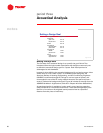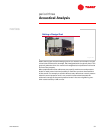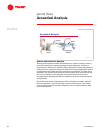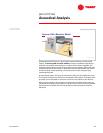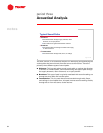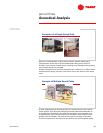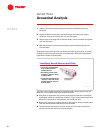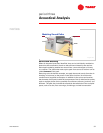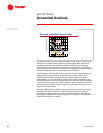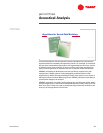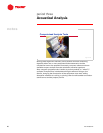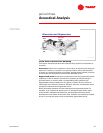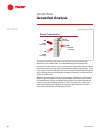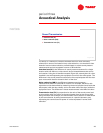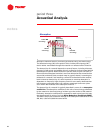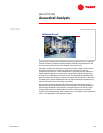
38 TRG-TRC007-EN
notes
period three
Acoustical Analysis
As mentioned previously, the total sound heard by the receiver is the sum of
sounds from multiple sources, following multiple paths. After each path is
modeled to determine its contribution to the sound-pressure level at the
receiver location, the paths must be summed to complete the model. While
separating the individual paths is necessary for modeling, a secondary benefit
is that the magnitude of the various paths can be compared.
In this example, sound travels from a single source to the receiver along four
separate paths: supply airborne, supply breakout, return airborne, and
transmission through the adjacent wall. By modeling these four paths
independently, you can see that the supply airborne path contributes to the
total sound-pressure level in the space much more than the other three paths.
In fact, when the sounds due to all four paths are logarithmically summed, the
total sound heard by the receiver is nearly the same as the sound due to the
supply airborne path alone.
This would indicate that, if the sound-pressure level in the space is too high,
the designer should focus first on reducing the sound due to the supply
airborne path. Reducing the sound due to the return airborne path, without
addressing the supply airborne path, would have no effect on the total sound-
pressure level heard in the space.
70
70
50
50
40
40
30
30
20
20
10
10
sound pressure, dB ref 20
sound pressure, dB ref 20
m
m
Pa
Pa
80
80
60
60
octave
octave
-
-
band frequency, Hz
band frequency, Hz
63
63
125
125
250
250
500
500
1,000
1,000
2,000
2,000
4,000
4,000 8,000
8,000
Example of Multiple Sound Paths
return
return
airborne
airborne
wall
wall
transmission
transmission
supply
supply
breakout
breakout
total
total
supply
supply
airborne
airborne
Figure 43



